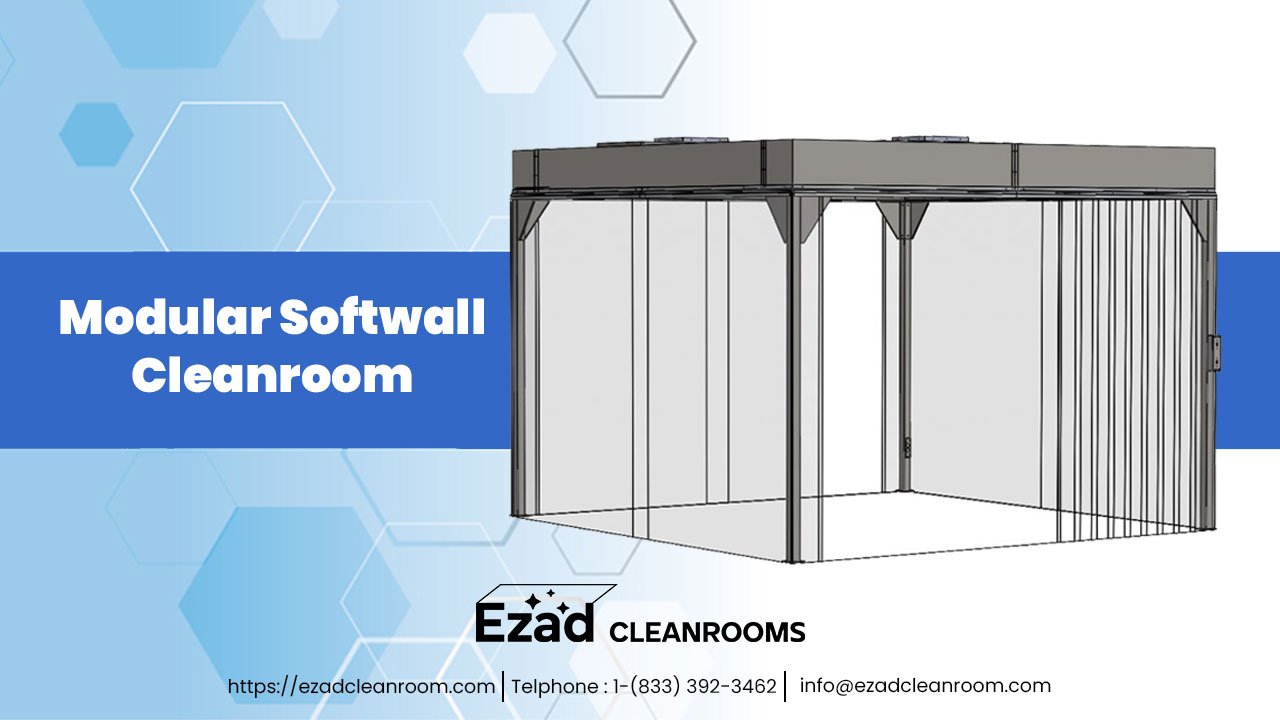Cleanrooms were invented first by Willis Whitfield before which there were only basic cleanrooms, which often hindered the users’ experiments due to the troubles with the particles. Besides, even the airflow was not really predictable in the previous one.
A cleanroom can be summed up as a controlled environment where the pollutants like dust, airborne microbes, aerosol particles, and more are filtered out. By filtering them out cleanrooms help to provide the cleanest area possible for various kinds of experiments to be conducted without any hassles.
Manufacturing products like electronics equipment, pharmaceutical products, and medical equipment are made easier by these cleanrooms.
What are modular cleanrooms?
Modular cleanrooms, as they are called now, are the modern form of cleanrooms that can be considered as standalone environments, which are validated to ISO 14644-1:2015. The positive pressure systems used in these kinds of cleanrooms are equipped with HEPA or ULPA filtration processes to protect the experiments from harmful airborne contamination. These kinds of cleanrooms are heavily rising in demand because the guarantee of a repeatable environment gives organizations a predictable and consistent production performance.
Modular cleanrooms are of 2 main kinds. These are softwall cleanrooms and Hardwall Cleanroom.
Hardwall cleanrooms – Hardwall Cleanrooms are enclosed with solid panels that help them get the strength and the permanence that many experiments and companies demand. These kinds of cleanrooms signify a high-integrity modular cleanroom wall construction. Here, you will also get panels, which are mounted onto coated steel frames, thereby creating robust walls that enclose the clean area.
Softwall cleanrooms – Softwall Cleanrooms, as their name suggests, are built of pressurized polymer curtains, which are similar to vinyl curtains while avoiding hard panels. This is why these are termed as “softwall.” Furthermore, what is unique in these cleanrooms is that the curtains of these cleanrooms are supported by tubular steel or aluminum frames in addition to a ceiling grid, which they have.
Softwall cleanrooms are expandable and portable, hence they are easy to shift while relocating, in contrast to the hardwall cleanrooms.
If you are wanting to know more about softwall cleanrooms, then you have landed on the right page.
Softwall Cleanrooms and their extensive uses!
Softwall cleanrooms are the cleanrooms that are used by a wide range of industries, which promise to stand as controlled spaces and help keep out air contaminants of a certain level. These cleanrooms are extensively used by a wide range of industries like pharmaceuticals, E-liquids, healthcare facilities, scientific and technological experiments, and more.
The cleanrooms with soft walls are the most economical variety of modular cleanroom wall construction. Here, as we have hinted previously, you will get clear and flexible panels that are mounted onto robust, steel frames, in order to enclose the clean area.
The PVC or Polysim panels that are used to overlap, ensure that the walls of the softwall cleanrooms perform as effective barriers when in position. The positive airflow of these cleanrooms pushes air down through the room. This helps the particles to be flushed out through the low-level exhaust vent.
Now, if you are curious to learn about the kinds of softwall cleanrooms that you can install, then there are, again, two kinds, which are PolySim and PVC.
The benefits of PolySim softwall cleanrooms:
- These cleanrooms are class 1 fire-rated.
- They don’t permit outgassing or blooming.
- These cleanrooms allow permanent ESD dissipation.
- They are quite friendly to the environment.
- They are available in three main colors, which are clear, white, and black.
The benefits of PVC softwall cleanrooms:
- These are an economic version of the softwall cleanrooms and they are popular as well.
- They allow reduced static versions.
- They are Non-degradable in ambient conditions
- PVC softwall cleanrooms are known for their high UV resistance.
- They are available in a range of colors, including clear and many color tints.
Benefits of using Softwall Cleanroom:
Here are some of the benefits that you will enjoy in case you opt for a softwall cleanroom:
- They are equipped with a self-closing mechanism, which reduces the risk of particles entering the room.
- These kinds of cleanrooms are extremely economical.
- They let in light for ambient working conditions
- Soft-walled cleanrooms allow an external staff to check out the internal cleanroom processes from outside.
- They are deemed to be perfect for full or part-coverage of machinery
Furthermore, these cleanrooms can be of any size and are always ISO Class 7-8 cleanrooms. They can also serve as mobile cleanrooms because they are easy to move to different production areas, along with acting as mini-environments in an existing cleanroom.
So, regardless of whether you are at a manufacturing plant, an engineering plant, or associated with food, plastics, printing, aerospace, and similar industries, you can easily opt for one softwall cleanroom for your projects and rejoice.
Original Source: https://www.launchora.com/story/what-is-the-use-of-softwall-cleanroom


